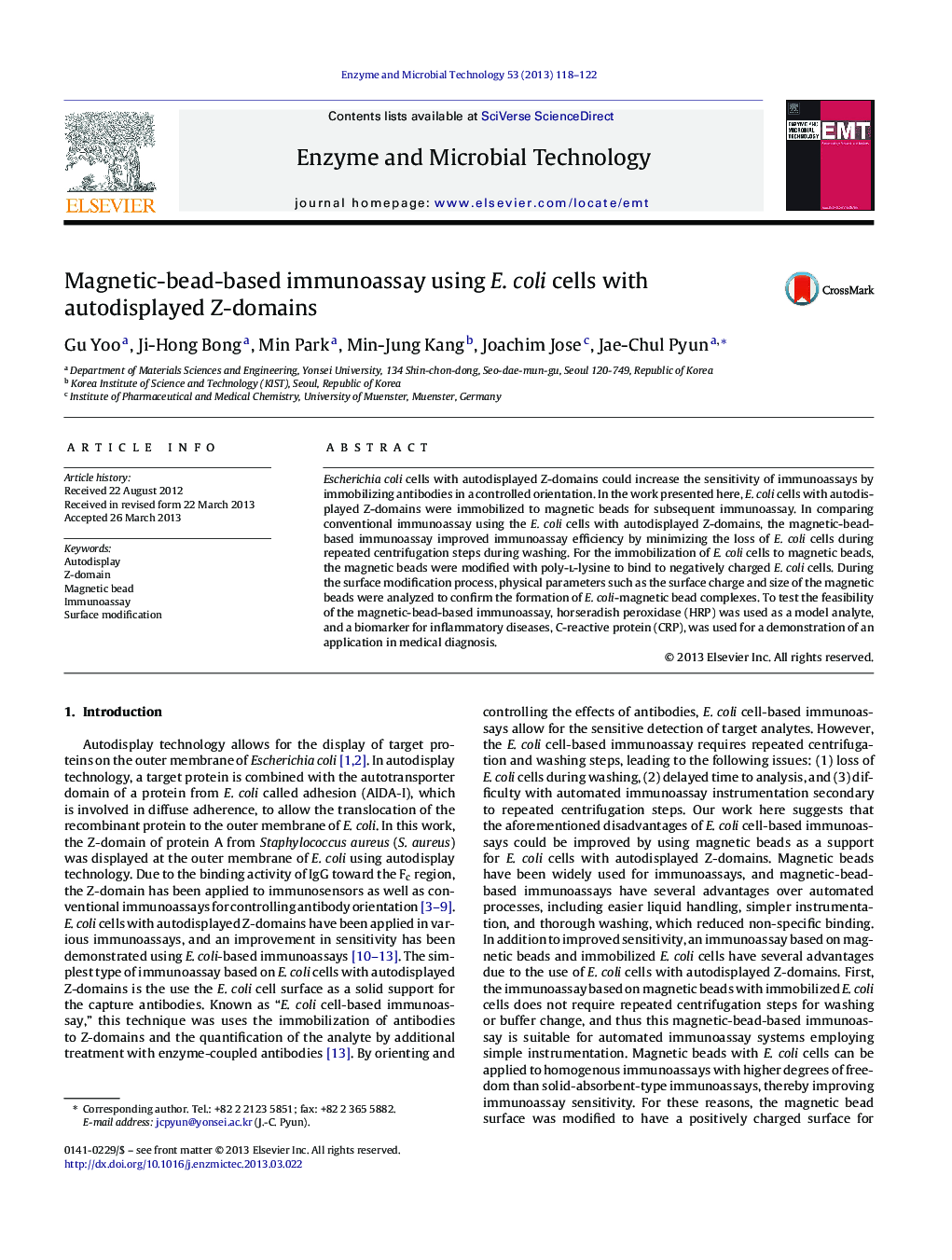| Article ID | Journal | Published Year | Pages | File Type |
|---|---|---|---|---|
| 17039 | Enzyme and Microbial Technology | 2013 | 5 Pages |
•The efficient and sensitive immunoassay was developed by immobilizing E. coli cells with autodisplayed Z-domains to magnetic beads.•The surface modification of magnetic beads was carried out for the immobilization of negatively charged E. coli cells.•The immobilization of E. coli cells was carried out by zeta potential measurement and FACS analysis.•The feasibility of magnetic bead based immunoassay was demonstrated by analyzing horseradish peroxidase and C-reactive protein as analytes.
Escherichia coli cells with autodisplayed Z-domains could increase the sensitivity of immunoassays by immobilizing antibodies in a controlled orientation. In the work presented here, E. coli cells with autodisplayed Z-domains were immobilized to magnetic beads for subsequent immunoassay. In comparing conventional immunoassay using the E. coli cells with autodisplayed Z-domains, the magnetic-bead-based immunoassay improved immunoassay efficiency by minimizing the loss of E. coli cells during repeated centrifugation steps during washing. For the immobilization of E. coli cells to magnetic beads, the magnetic beads were modified with poly-l-lysine to bind to negatively charged E. coli cells. During the surface modification process, physical parameters such as the surface charge and size of the magnetic beads were analyzed to confirm the formation of E. coli-magnetic bead complexes. To test the feasibility of the magnetic-bead-based immunoassay, horseradish peroxidase (HRP) was used as a model analyte, and a biomarker for inflammatory diseases, C-reactive protein (CRP), was used for a demonstration of an application in medical diagnosis.
